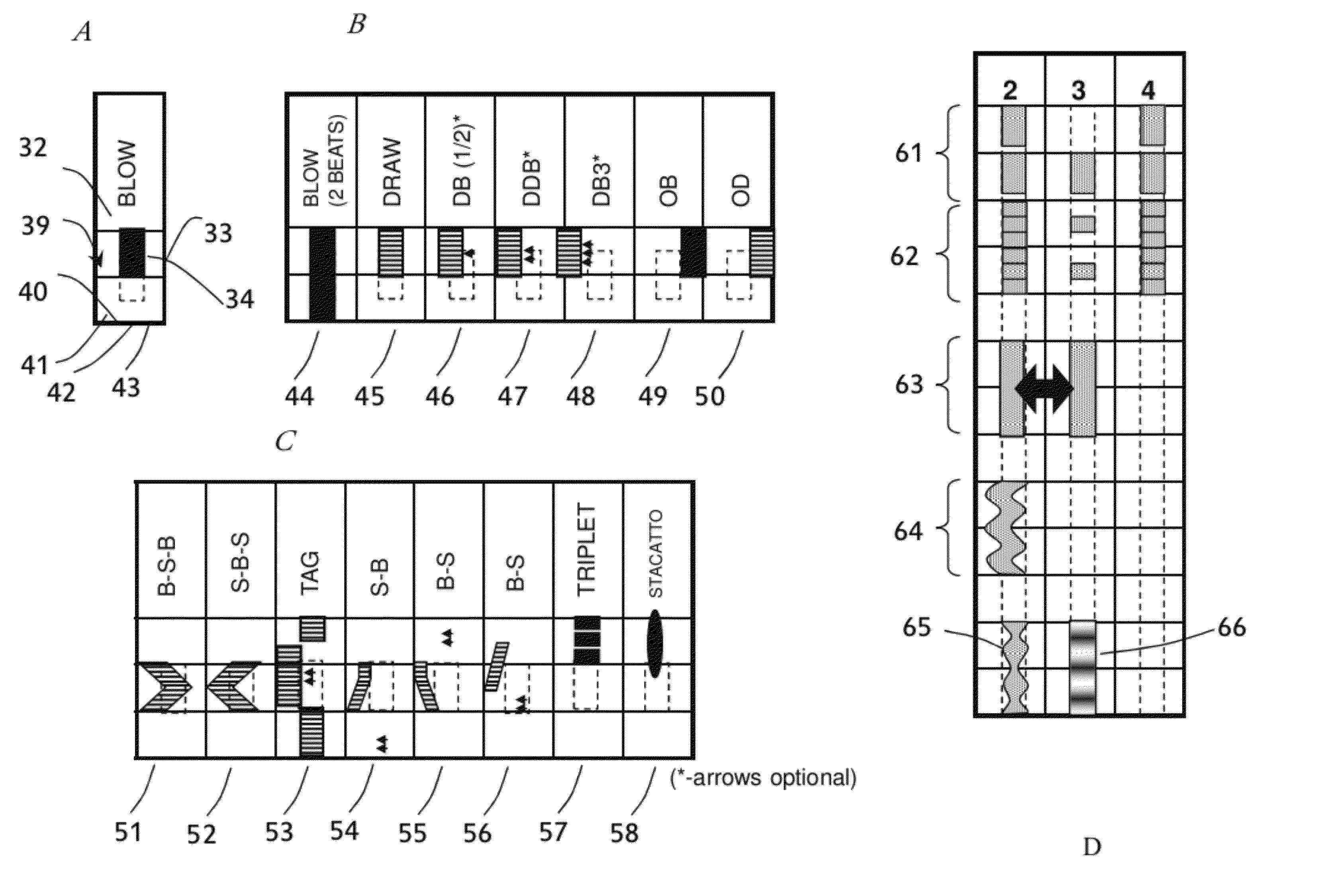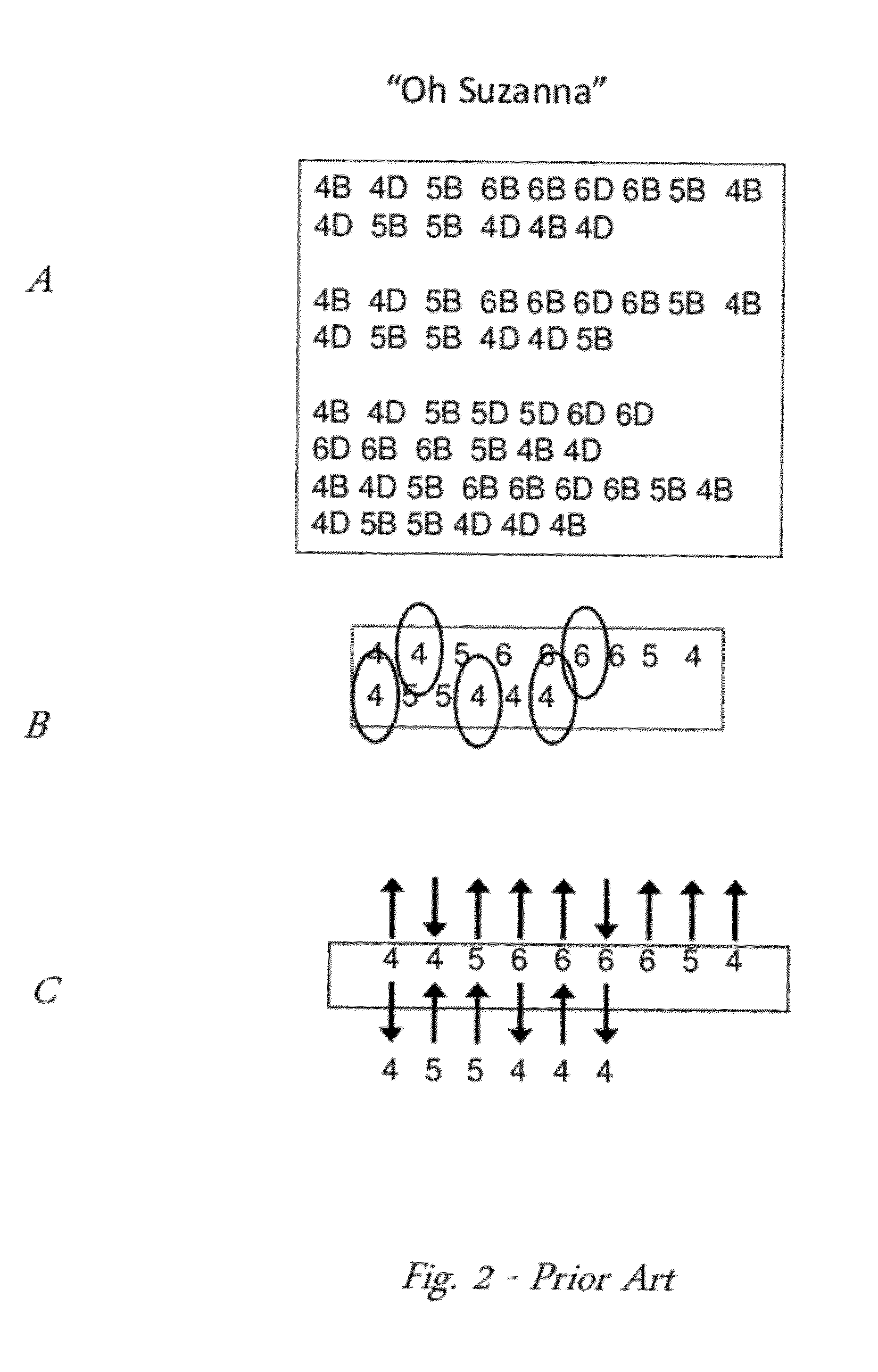Musical notation and method of teaching same
a technology of notation and music, applied in the field of music instruction, can solve the problems of not necessarily, the note cannot be easily conveyed, and the tablature forms above cannot be used, so as to speed up the playback speed of the pre-recorded musical selection and/or the player's musical attemp
- Summary
- Abstract
- Description
- Claims
- Application Information
AI Technical Summary
Benefits of technology
Problems solved by technology
Method used
Image
Examples
Embodiment Construction
[0048]The present invention provides a means for playing a reference musical selection, recording a player's attempt, and comparing the two to provide corrective feedback to the player.
[0049]Various aspects of the invention described herein may be applied to any of the particular applications set forth below. It shall be understood that different aspects of the invention can be appreciated individually, collectively or in combination with each other.
[0050]As used herein, the terms “student,”“musician,” and “player” are interchangeable and are defined as a person who plays, or attempts to play, a musical instrument.
[0051]Referring now to FIG. 3, an example of musical notation for the harmonica in accordance with a non-limiting embodiment of the present invention is shown. It provides for a musical staff, generally indicated by 27, comprising a grid of orthogonal lines, having a height greater than its width, principally aligned in the vertical direction such that the downward directi...
PUM
 Login to View More
Login to View More Abstract
Description
Claims
Application Information
 Login to View More
Login to View More - R&D
- Intellectual Property
- Life Sciences
- Materials
- Tech Scout
- Unparalleled Data Quality
- Higher Quality Content
- 60% Fewer Hallucinations
Browse by: Latest US Patents, China's latest patents, Technical Efficacy Thesaurus, Application Domain, Technology Topic, Popular Technical Reports.
© 2025 PatSnap. All rights reserved.Legal|Privacy policy|Modern Slavery Act Transparency Statement|Sitemap|About US| Contact US: help@patsnap.com



